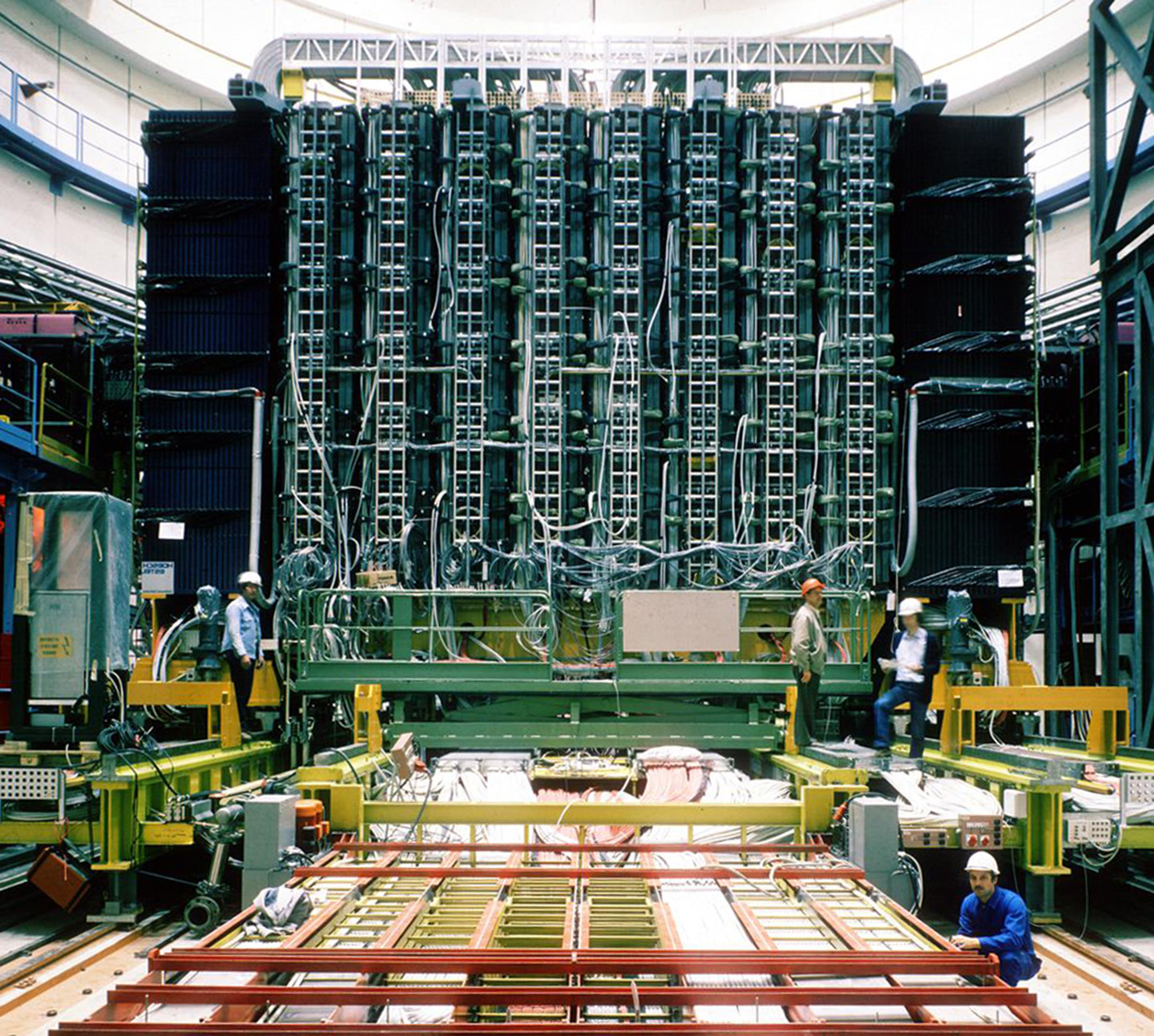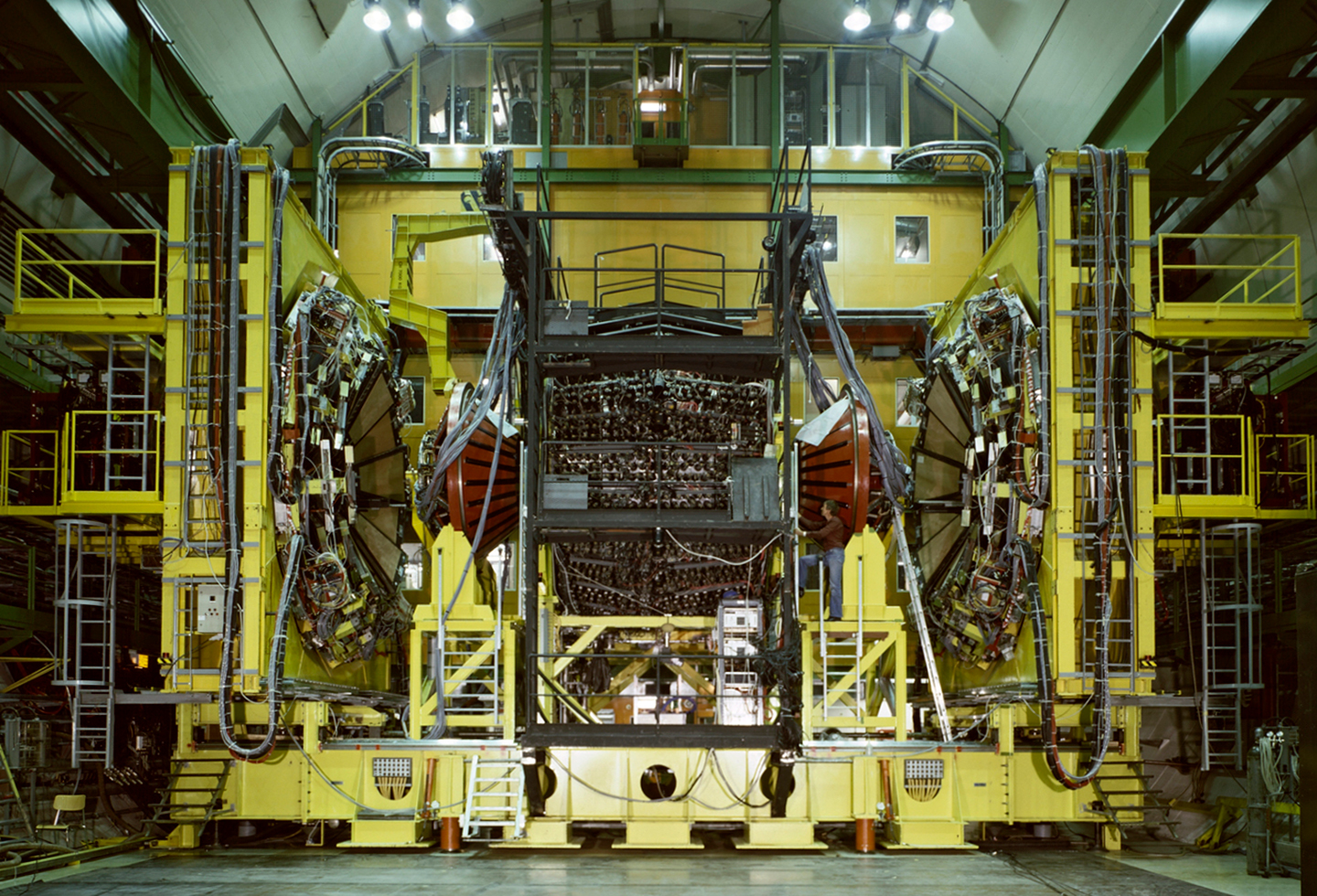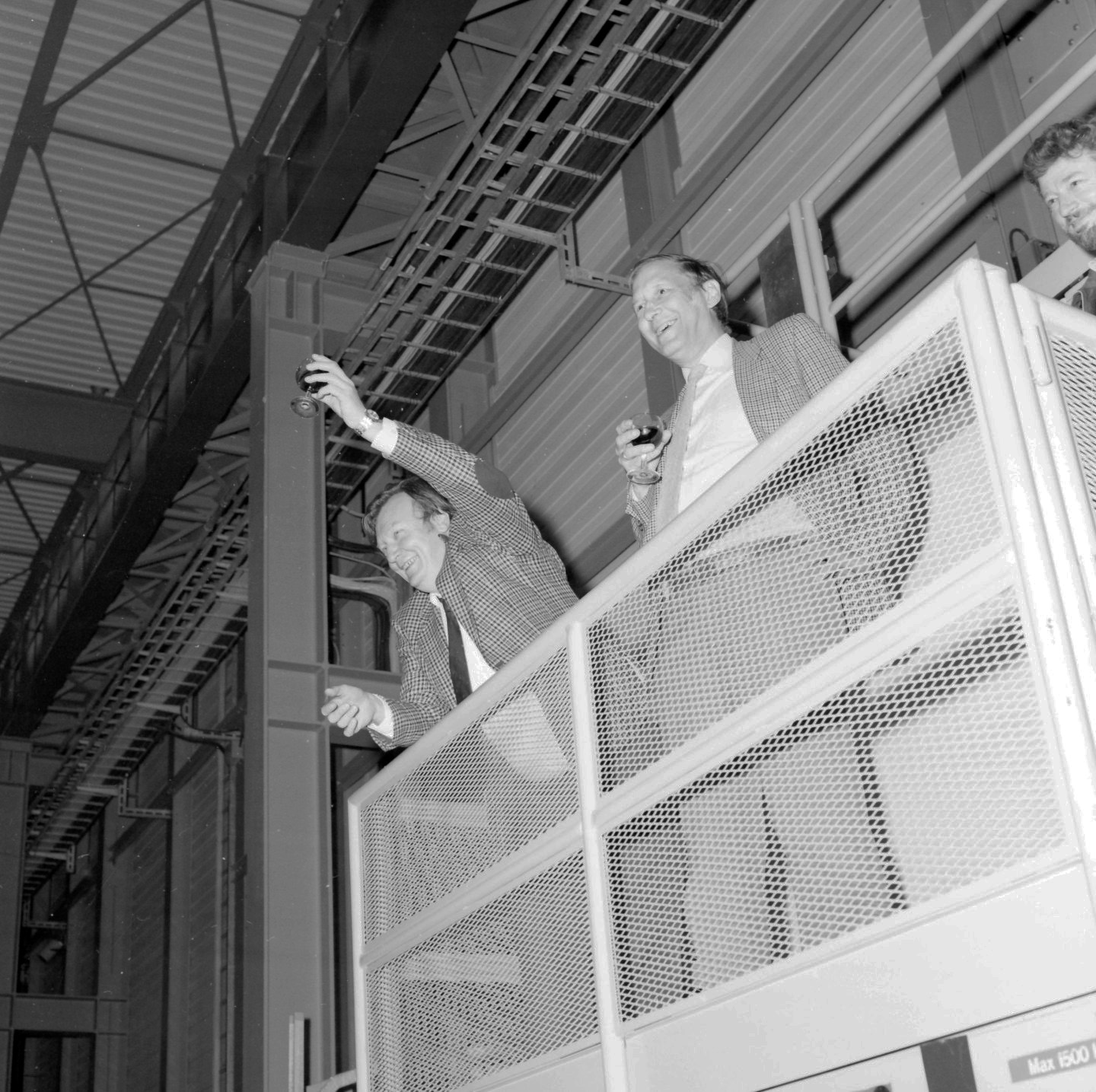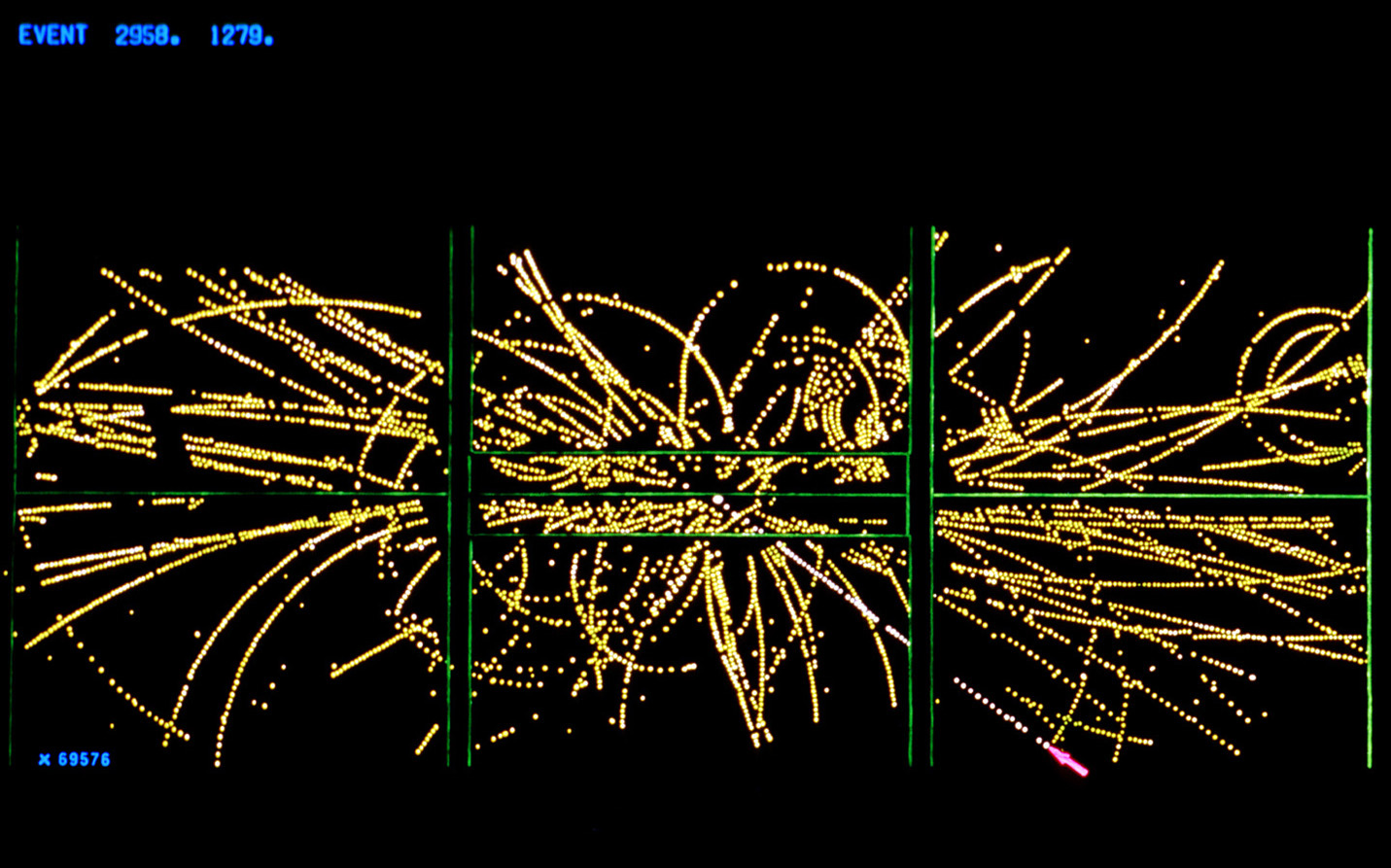CERN70: The end of the alphabet
11 July 2024 · Voir en français
Part 13 of the CERN70 feature series. Find out more: cern70.cern
Carlo Rubbia’s name is closely related to the discovery of the W and Z particles at CERN

In 1983, CERN reached the end of the alphabet when the Laboratory announced the discovery of the long-sought W and Z particles. The announcement was so momentous that, the following year, the two scientists behind the discovery received the Nobel Prize in Physics. In 1984, Carlo Rubbia, the instigator of the conversion of the Super Proton Synchrotron (SPS) into a proton–antiproton collider and spokesman of the UA1 experiment, and Simon van der Meer, who invented the stochastic cooling technology vital to the collider’s operation, received the award from the Nobel Foundation.
To understand the importance of the discovery, one has to go back to three previous Nobel laureates. In the 1960s, Steven Weinberg, Abdus Salam, and Sheldon Glashow had proposed that the electromagnetic force and the weak force – which is responsible, for example, for some types of radioactivity – were both manifestations of a single interaction. According to this theory, three heavy particles, the W+, W- and Z0 bosons, are responsible for the “electroweak” force between particles.
First evidence of this unified force had already been found at CERN in 1973 by the Gargamelle experiment. But there was still no trace of the famous W and Z bosons, which were too heavy to be produced by the accelerators that existed at that time. The boson hunters were certainly not short of ideas, however. In 1976, David Cline, Peter McIntyre and Carlo Rubbia put forward the idea of converting CERN’s largest accelerator, the SPS, which had just come into operation, into a proton–antiproton collider, which would create sufficiently high energy levels to produce the long-awaited bosons.

It took only three years to transform the accelerator, between 1978 and 1981, during which time two experiments UA1 and UA2 were developed. The two detectors had the same main objective, the hunt for the W and Z bosons, but they differed in many ways. UA1, led by Carlo Rubbia, was the first of the large-scale collaborations, consisting of around 130 physicists. Its detector, which was huge for the time, weighed no less than 2000 tonnes. It had also been set numerous scientific objectives. UA2, which was designed specifically to search for the W and Z particles, was ten times smaller, and brought together a group of some 50 scientists.
The SPS recorded its first proton–antiproton collisions in July 1981. At the end of 1982, around one million events potentially providing evidence for the W and Z bosons had been recorded. On 21 January 1983, the UA1 team announced the discovery of the two W particles, which was confirmed by UA2. Ten times more W bosons were produced during the spring. In May, CERN announced the discovery of the third intermediate boson, the Z0.
Beyond its significance as a physics result, the discovery of the W and Z bosons was fundamental in reinforcing the conviction within the scientific community of the need to build the Large Electron Positron (LEP) accelerator, which came into service in 1989. LEP was a veritable Z factory – producing some 20 million Z particles – before becoming a W factory, and so measured the properties of both bosons with extreme precision.
Recollections
The discovery of the W and the Z, promptly recognised by the Nobel Committee, was then so to speak “the tip of the iceberg” of a marvellous and unique adventure in which so many remarkable people from so many different countries […] have proudly contributed.
Carlo Rubbia
Carlo Rubbia’s name is closely related to the discovery of the W and Z particles at CERN. In 1984, he was awarded the Nobel Prize in Physics, together with Simon van der Meer, for the work he had done as head of the UA1 collaboration. During his mandate as Director-General of CERN from 1989 to 1993, the Large Electron Positron collider was inaugurated and the four LEP experiments gave their first results.

“I came to CERN for the first time in 1960. Even now, I feel as motivated and enthusiastic for institutionalised international cooperation as I was on the first day, at the time when such an innovative concept, so popular nowadays, was essentially unknown.
CERN was born by a remarkable group of founders, at the threshold of a renewed European prosperity, to promote pure science on a global European scale and to create trust and unity between people of different countries, traditions and mentalities, after the disasters of the Second World War.
CERN has been for us an extraordinary “melting pot”, gathering a large number of remarkable and very young talents from many different countries. Living together – so to say “under the same roof” – and with a satisfactory adequacy of resources, we have been able to operate in a unique climate of absolute scientific freedom with an immense enthusiasm and motivation. We all have enjoyed a “sum-plus”, in which the resultant combination of the team has been far more relevant than the sum of the separate contributions of each of us.
The originality of the CERN accelerator community has been evident from the beginning, with the realisation of the first strong-focusing proton accelerator by John Adams, then in his thirties, and by the remarkable team he had built up. He had the courage of cancelling the already approved 10 GeV weak focusing for a totally innovative 25 GeV Proton Synchrotron. The next adventure was the realisation of the Intersecting Storage Rings, the ISR, which acted as a “reference” for all the subsequent projects, and which was made possible by the vision of the then Director-General, Viki Weisskopf.

However, the physics results, mostly because of non-optimal choices in the instrumentation at those times, were probably, in retrospect, below what they should have been. But the many accelerator innovations, learned with the ISR, allowed features for the SPS that were far more advanced than the ones at Fermilab in the United States, a relatively conventional accelerator, thus making possible a subsequent fast conversion into the SPS collider. An excellent accelerator, the SPS already had all the basic features to become a collider. All that was needed was an “industrial” antiproton source, at a time when even a handful of antiprotons was considered a success. This required overcoming the so-called Liouville theorem, amplifying early studies performed at the ISR by Wolfgang Schnell and Simon van der Meer. Enthusiasm and drive were so high that this jewel, the Antiproton Accumulator was built in less than two years!
The marvellous chain of new accelerators, SPS first and LEP later, have been complemented by the development at CERN of a number of equally revolutionary instrumentation technologies, such as the wire and drift chambers, the calorimeter (Herwig Schopper), and so on, without which all important discoveries in the field world-wide would have been impossible and for which Georges Charpak well deserved his Nobel Prize.
The discovery of the W and the Z, promptly recognised by the Nobel Committee, was then so to speak “the tip of the iceberg” of a marvellous and unique adventure in which so many remarkable people from so many different countries, several of whom unfortunately no longer with us, have proudly contributed.

In order to assess the importance of what has been accomplished by the CERN teams in those days, it is sufficient to point out that until the LHC, the world’s hadronic high-energy frontier was dominated by two proton–antiproton colliders, the first entirely developed at CERN and the second incremented in energy with the Tevatron at Fermilab.
We have tremendously enjoyed this epoch of CERN: we are proud of what we have been able to accomplish. To quote Simon van der Meer: “If they have some idea – however crazy it is – they should check up on it. Once in a hundred times it will turn out to be a good idea.””
----
This interview is adapted from the 2004 book “Infinitely CERN”, published to celebrate CERN’s 50th anniversary.
